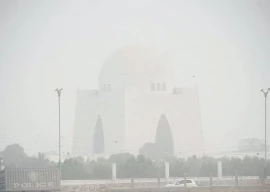
KARACHI:
If details such as the load on one electrical outlet, gap in ventilation pipes and blocked emergency exits are overlooked at a workplace, it could cost you your life if a fire breaks out.
The Baldia factory fire, in which 259 people died, has brought to light how unaware people are at the workplace when a fire breaks out. It has also thrown into relief the incomprehensive training of firefighters.
To educate people, volunteers from the Fire Protection Association of Pakistan held a workshop on Saturday, to train staff from safety companies and businesses on how to deal with such emergencies.
“The companies are now realising how important the subject is,” said the secretary of the association and one of the trainers, Tariq Moen. The factory fire was not taken seriously enough as only eight companies out of the 50 invited sent staff for the one-day training session. “We take precautions for granted,” said Moen. Moen pointed out that you don’t walk in a room filled with smoke because the fumes rise towards the roof. “The best way is to crawl and drag the injured to safety on your knees.”
It is hard to say how many Pakistani companies employ dedicated fire safety officials who routinely carry out risk assessments. “Companies such as Afroze Textiles and Tapal Energy Limited already have safety officials, yet they have sent their employees to the workshop. This shows that training is always beneficial,” said Moen.
A fire drill every few months is imperative to avoid casualties when a fire breaks out. Muhammad Imran, who represents a fire safety equipment provider, said that the Aga Khan University Hospital was the best example of taking necessary precautions in a building design. “There is no large hall with dozens of patients in one place. The whole place is divided into compartments, which will help contain a fire to just one place.” It is most likely that a fire will travel from one room to the other through ventilation pipes and other gaps in the walls. “You only need to cement the holes which you think pose a hazard.”
Published in The Express Tribune, October 15th, 2012.


















































COMMENTS
Comments are moderated and generally will be posted if they are on-topic and not abusive.
For more information, please see our Comments FAQ